Colorado Football Defensive Preview
This is a team with a struggling offense, buoyed by a strong defense featuring a number of future NFL players. Sound familiar?
In yesterday’s offensive preview, I described a young and struggling offense. This season Colorado has relied on a strong defense, one that hopes their offense is able to do just enough to win low scoring games. They have looked very impressive at times, narrowly losing a low-scoring slugfest with Texas A&M 10-7 just a few weeks prior to A&M’s upset of #1 Alabama (Alabama gave up 41 points to Texas A&M), and shutting out Arizona last week in embarrassing fashion (with 2 of their 4 touchdowns scored by the defense). Of course, with a struggling offense constantly going 3 and out, the defense is bound to get fatigued spending the entire game on the field, and so Colorado has been outscored 62-17 in the second half of their 4 losses so far this season.
There are two key things to note about this defense. One is that they are just a fundamentally sound, well-coached team. When you watch a ton of college football games, you’ll start to see a lot of the same plays over and over again across teams/games: screen passes, bubble screens, a tight end disengaging from a block to then run a route, check downs out wide to a running back, quick out patterns to the first down marker on 3rd downs, and so on. If you have a young or inexperienced quarterback, you’re not asking him to make complex progressions or difficult throws into tight windows, you’re giving him simple read plays, safe passes, etc., and thus these “common plays” you see all the time are the bread and butter of many teams. The thing about Colorado’s defense is that they know these sorts of plays are coming, and they do an excellent job of taking these plays away from an offense. Arizona doesn’t have particularly good quarterbacks (and they’re down to their third string QB now anyway), and Colorado had an absurd number of tackles for loss on first downs last week, consistently putting Arizona in 2nd and 10+, 3rd and 10+ situations, and that’s a tough situation for a struggling quarterback to be consistently placed in.
The second thing to know about Colorado’s defense is that they have a number of NFL-caliber players on the defense, and in contrast to Colorado’s young offense, this is a very experienced group of players. Defensive end/outside linebacker Carson Wells grades out as a mid-round draft pick. Linebacker Nate Landman, Colorado’s version of Evan Weaver, similarly grades out as a later-round pick. Defensive tackle Terrance Lang and nose tackle Mustafa Johnson have a chance as late round picks (Terrance Lang has prototypical NFL size, but Mustafa Johnson, although extremely productive at the college-level, may be too undersized to play DT at the NFL level). They also have a future star cornerback in freshman Christian Gonzalez, already their best corner. In other words, this is a well-coached defense with NFL talent, being held back by offensive ineptitude. Does this sound like a team you remember from a few years ago?
Defensive line
Colorado has a very good front-7. At the nose tackle or defensive tackle position is Mustafa Johnson, a strong and quick (if a bit undersized) interior lineman. Johnson actually declared for the NFL Draft in 2020, went undrafted, and received a waiver to return to the team after sitting out for a period of time. He only recently returned to the team. Johnson posted 7.5 sacks in his freshman season at Colorado, utilizing his quickness to both squeeze through gaps and chase down mobile quarterbacks. Here’s one such example:
At one end of the defensive line is Terrance Lang, a 6’7” 285 lbs. monster. He had a very effective 2020 season, but so far this year he’s been his own worst enemy: he’s been able to hurry QBs, but he’s negated his own sacks and TFLs with things like facemask penalties, and thus he hasn’t really shown up on the stat sheet so far this year. His QB hurries have also nearly resulted in interceptions, as he’s hit a couple quarterbacks this season which resulted in passes floating in the air for anyone to grab.
On the other end of the line is Carson Wells. Colorado lists him as a defensive end on the depth chart, but he functions more like a pass rushing outside linebacker who often drops back into coverage. You’ll see him do things like simulate pressure and drop back into the zone that a quarterback might try to hit on a hot route, but he’s just a very disruptive player in general. 2020 was a wonky season, but Carson Wells actually led the nation in TFLs/game last season. He’s very good at diagnosing plays and putting himself in the middle of things, and he’s also a very reliable tackler— I can’t recall seeing a running back beat him in open space. This makes him a very good edge defender, and probably their best NFL prospect.
Here’s a typical Carson Wells play:
And here’s one where he baited Arizona’s quarterback on a pass, resulting in a pick-6:
Linebackers
As good as Carson Wells is, the player you’ll see the most of is linebacker Nate Landman. Landman reminds me of Evan Weaver in many ways. For one thing, he has fantastic football instincts and is always in the right place at the right time for the tackle. If you aren’t sure what play the offense is running, just look for #53 on the defense and see where he’s going on a play.
Nate Landman is the cornerstone of the defense. Colorado started last season off 4-0, but Landman was injured late in the second quarter of the Utah game, and Utah came back to win it 38-21, scoring 31 points after Landman left with an injury. Colorado was similarly helpless on defense in their final game of the season, a 55-23 loss in the Alamo Bowl to Texas. When you build a defense around a player and that player gets injured, you’re probably in trouble (see also: Oregon and Thibodeaux in 2021).
Landman (along with Wells) is a big part in taking away those “easy” plays from an offense. Here Landman manages to both pressure the quarterback to throw the screen pass before it’s developed, as well as single-handedly blow up the running back like a heat-seeking missile:
Although Landman is clearly the defensive focus at middle linebacker, the strong- and weak-side linebackers are also pretty solid. At the Will position is Quinn Perry, who is starting to make an impact this season. Perry has been surprisingly good in pass coverage against pass-catching running backs and tight ends in multiple-TE sets. At the Sam position is Notre Dame transfer, 4-star LB Jack Lamb. Lamb is a sure-tackler, but he hasn’t always put himself in the best places to defend the run.
Secondary
Colorado has a pair of solid corners. There’s the freshman CB Christian Gonzalez, who has already established himself as the best corner on the team. Gonzalez’s early season games remind me a lot of former Stanford/current New Orleans Saints cornerback Paulson Adebo’s freshman season: a lot of times, when an offense spots a backup or freshman corner, they will target them relentlessly. I remember watching Adebo’s freshman year game against USC (the 2nd game of the season), where USC QB JT Daniels went after Paulson Adebo relentlessly, and Adebo kept batting away the pass and blanketing his receiver on every play, and I thought to myself, “why is he still going after this guy?” Of course, by game 3, everyone learned that you should probably avoid Adebo’s side of the field (well, except Cal, who threw 2 INTs to Adebo that year, but I digress). This is the same exact vibe I got with Gonzalez. In the 2nd game of the season, Texas A&M QB Zach Calzada—the guy who threw for a 67% completion rate, 285 yards, and 3 TDs against Ala-flippin’-BAMA—went after Christian Gonzalez relentlessly. Gonzalez knocked away pass after pass as he killed multiple Texas A&M drives by knocking down short 3rd down pass after short 3rd down pass, to the point where I wondered, “What is Texas A&M doing going after this guy?”
As I mentioned earlier, when a team has a young or inexperienced quarterback (Calzada started the season as the backup quarterback, but the starter Haynes King was injured very early on in the Colorado game), Colorado completely anticipates the type of short/safe/easy plays a team will be looking for. Here is a play that Colorado repeatedly blew up:
You might notice that not only was CB Christian Gonzalez all over it, but LB Nate Landman was similarly ready to blow up the receiver had he made the catch anyway.
Since then, it’s been pretty clear that Gonzalez is already their best corner. As Colorado’s top corner, he was given the very unenviable task of trying to cover the nearly unstoppable wide receiver Drake London:

It’s hard to appreciate what a play this is until you know just how good Drake London is: London will be doing this next year to NFL corners, and in my opinion, London is easily the best wide receiver in college football right now. Gonzalez again reads the route correctly the entire way, knows that London is going to try to shove off him to buy a bit of space, locks onto London’s jersey to take that space away, and then knocks London out of bounds before he can make the catch. It is not possible for Gonzalez to have played this any better. Even despite Gonzalez’s blanket coverage, he was still on the wrong end of some London highlights (through no fault of his own, simply because he was tasked with covering London). Here’s a sneak peak at a clip I have saved in my USC folder:
This should put into perspective how good Gonzalez’s play was that game. Gonzalez once again anticipates the route, reacts to the throw in a split-second, outstretches his arm to defend the pass, and London has to tip the ball off his fingertips to himself to make a one-handed catch. PFF gave a poor grade to Gonzalez in coverage this game, but I don’t care what anyone says, I think you’d be hard-pressed to find anyone who could have defended this better. (This actually wasn’t the only circus catch London made over Gonzalez, but you’ll have to wait for USC week to see the rest of London’s ridiculous highlights). The only thing the 6’2” Gonzalez could have done to defend London better is grow 6 inches taller.
At the other corner position is yet another solid defender, CB Mekhi Blackmon. I think Blackmon also has a chance at being a late round draft pick. Blackmon won’t blanket a receiver the way Gonzalez would, but he’s still pretty good in coverage. Here’s yet another example of Colorado taking away the easy play from the opponent:
Blackmon stays right at the sticks, and makes sure that the receiver’s momentum carries him away from the first down. The quick out route is a more difficult throw than something breaking towards the middle of the defense, but as we saw from Gonzalez’s A&M clip, Colorado is pretty good at taking that away too. It’s much easier for a receiver to get open on the out route, but it leaves very little margin for the quarterback— you can see that Arizona QB Gunner Cruz’s pass was just a tiny bit off from where it should be, forcing the receiver to come back to the ball about a yard short of the first down marker anyway.
Blackmon does a good job adjusting to the ball:
Blackmon had a similar interception this season against Northern Colorado as well (it just wasn’t as highlight-worthy, it was just a straight-up bad pass).
At the safety position are Isaiah Lewis and Mark Perry. Although they may be good defenders individually, I find that this is probably the softest part of a relatively strong defense. A lot of big pass plays by opponents come in the space between the corner and the safety, where the corner anticipates safety help but the safety is not there in time. It’s not always possible to tell who is responsible when a pass is caught in the space between a corner and a safety, but… well, it looked like the safety’s responsibility to me.
Conclusion
Colorado has a very strong defense, and if all goes according to their defensive game plan, they will take away the easy check downs and predictable plays from the Cal offense. For Cal to score consistently on offense, we will probably need to see more creative play calls that Colorado has not seen on tape before, or we will need Chase Garbers to hit some tougher throws down the field. If I had to guess, it’s very easy to imagine the Cal offense struggling this game, so I’m hoping that the Cal defense either does a better job against Colorado’s offense, or the Cal offense can keep Colorado on the field long enough that the Colorado defense get winded and gradually start giving up bigger and bigger runs, or they start missing more tackles, or something along those lines. Cal usually starts games off strong, but Colorado usually finishes games off weak. It will be interesting to see which gives way first.
Go Bears.


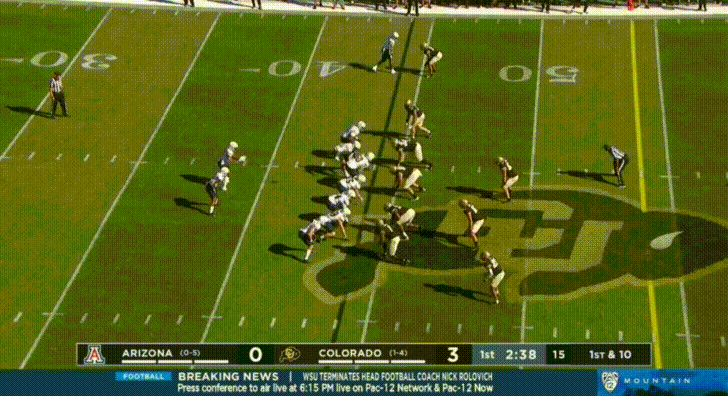
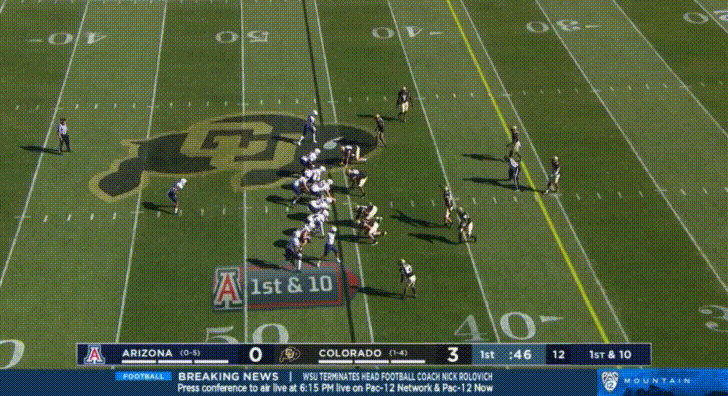
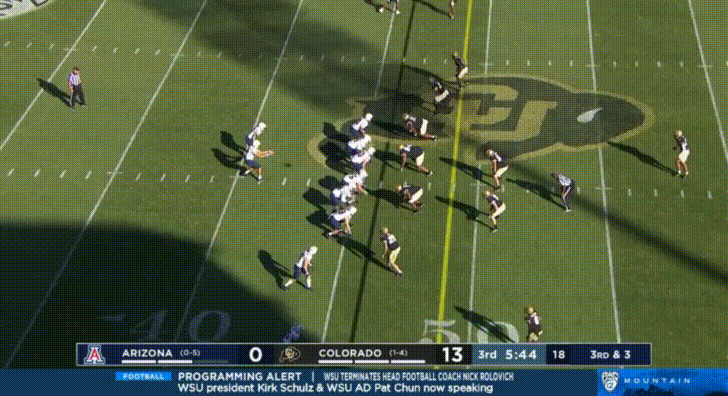
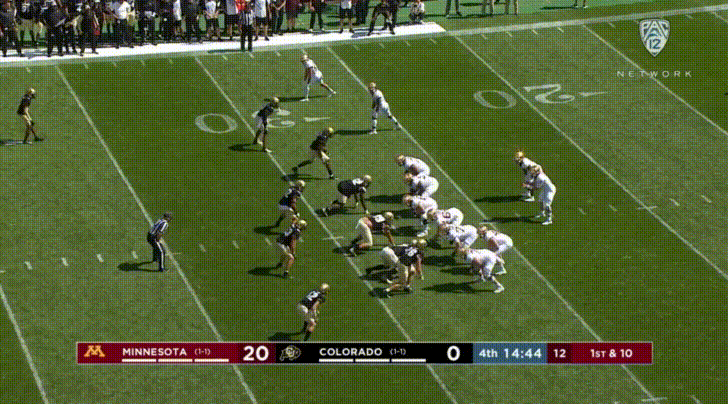
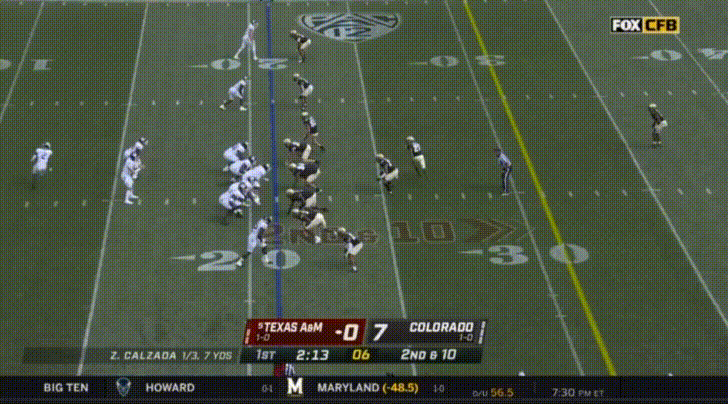
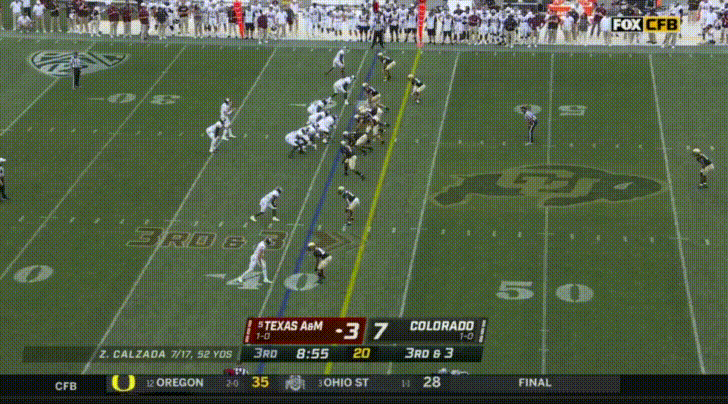
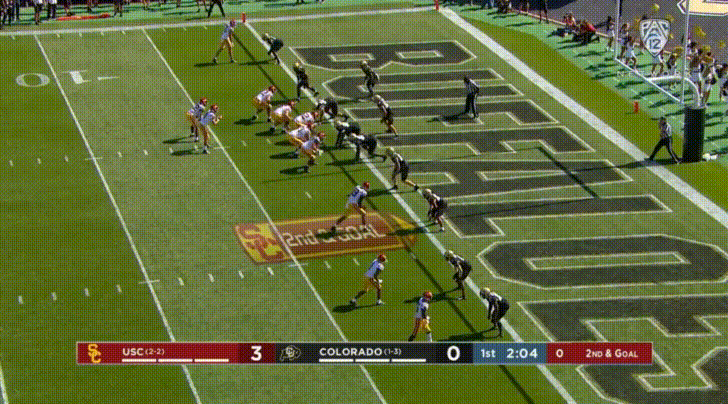
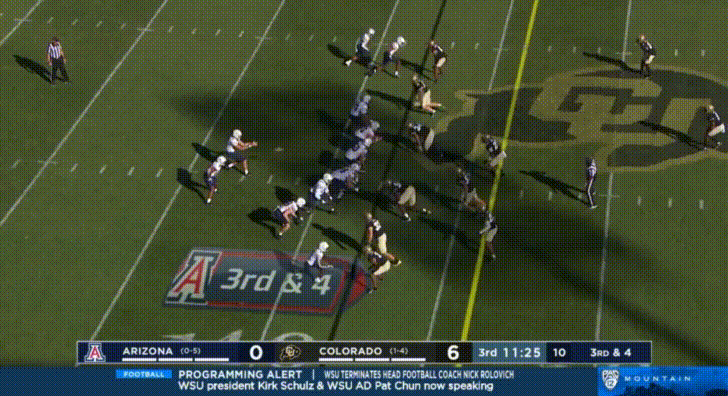
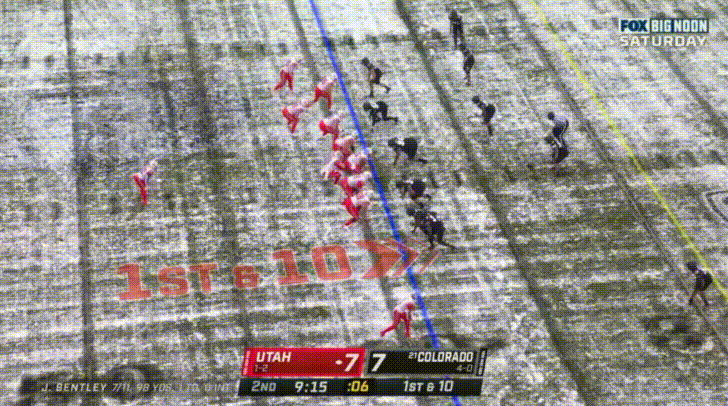
The strength of their defense is troubling. So I think this may be a low scoring affair.